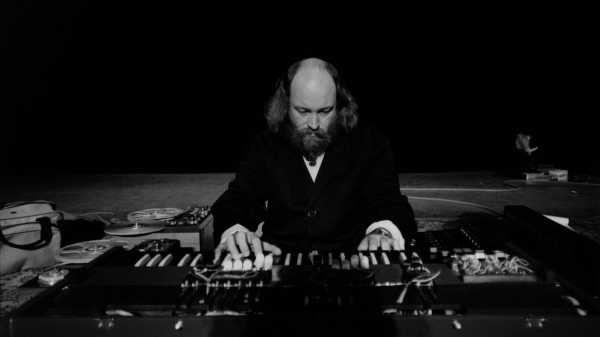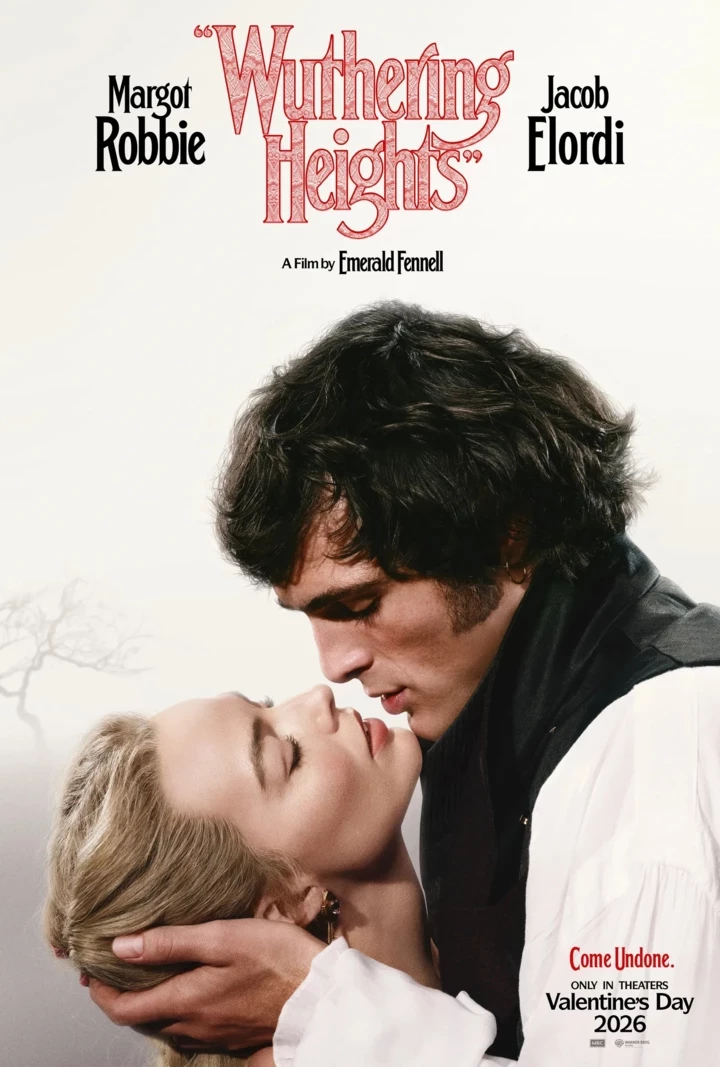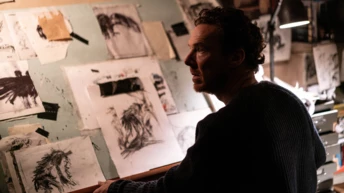
Save this storySave this storySave this storySave this story
“The Man can’t bust our music,” an advertisement in the underground newspaper Berkeley Barb proclaimed, in November, 1968. The accompanying image showed seven presumed radicals huddled in a jail cell. “The Establishment’s against adventure,” the text continued. “And the arousing experience that comes with listening to today’s music.” The advertiser was Columbia Records, and, surprisingly, its attempt to cash in on the youth movement hinged on selling not “The White Album” or “Electric Ladyland” but experimental classical fare, such as Charles Ives’s “Concord” Sonata, Karlheinz Stockhausen’s “Mikrophonies,” and an album titled “In C,” by a then unknown figure named Terry Riley. “They’re ear stretching,” the ad copy enthused. “And The Man can’t stop you from listening.”
The counterculture did not take kindly to Columbia’s astroturfing. The music critic Ralph J. Gleason wrote, in a denunciatory column in the anarchist paper Fifth Estate, “The name of the game, seen from one point of view, is steal the rhetoric of the revolution like the poverty program stole the organizers.” Radical outlets considered a sit-in at Columbia’s headquarters and “liberating” the label’s LPs from record stores. Following the backlash, Columbia stopped advertising in the underground press.
Thankfully, the controversy did not drown out the visionary sound of Riley’s “In C.” As ham-fisted and patronizing as Columbia’s tagline—“The only legal trip you can take”—may have been, the album did indeed become a generation-defining crossover hit, marking the major-label arrival of a pulse-based musical revolution, now known as minimalism, that had been simmering in New York lofts and San Francisco studios. On its release, High Fidelity called “In C” “one of the definitive masterpieces of the twentieth century,” and compared its impact to that of “The Rite of Spring.” Glamour proclaimed it “the global village’s first ritual symphonic piece.” Now, in honor of Riley’s ninetieth birthday, Sony Classical has reissued the composer’s four Columbia albums in a box set, including “In C” and its splendorous follow-up, “A Rainbow in Curved Air.” The release reaffirms Riley’s foundational status in the history of late-twentieth-century music and his unexpectedly broad influence.
Riley, a Northern California native, who has always exuded a Zen-like geniality, was part of a generation of young American composers who had turned away from audience-alienating atonal music, which had been proselytized by their teachers in the science-minded postwar academy. Instead, they gravitated toward jazz, pop music, and music of other cultures—and, in Riley’s case, psychedelic drugs. In the late nineteen-fifties, studying composition at the University of California, Berkeley, while supporting himself playing piano in bars, Riley struck up a close friendship with La Monte Young, a radical prodigy who had written a string trio that stretched a twelve-tone row into series of long, buzzing held notes. The work’s glacial pace, indebted to the drones of Indian raga, inspired Riley to experiment with stasis and repetition.
Young soon headed to New York, where he made his name in performance-art happenings in Yoko Ono’s loft, while Riley decamped to Europe. Settling in Paris with his wife and daughter, he took a piano gig in a bar on the Rue Pigalle, playing to sex workers and inebriated businessmen, and also accompanied shows at American military bases. Asked to write music for an experimental play, he conscripted the trumpeter Chet Baker, then floating around Europe in between drug arrests, to record Miles Davis’s “So What” to use as source material. Working with a French radio engineer, Riley began feeding the Baker tape from one machine directly into another, so that the recorded music layered on top of itself—anticipating the loop pedals now ubiquitous in indie music and creating a hazy refraction of cool jazz.
When work dried up in Paris, Riley returned to San Francisco and to his old job playing honky-tonk piano in a saloon. Riding a bus to work in the spring of 1964, he had an epiphany: he would adapt his experiments in electronic looping into notated music for live musicians. “In C” comprises a sequence of fifty-three short riffs designed to be repeated as many times as desired. The score fits on a single sheet of paper, and the piece can be played by any number of performers, in any instrumentation. The result is a slowly shifting kaleidoscope of bright, consonant sound, which, with its pointed title, easily digestible concept, and improvisatory spirit, was also a rejection of the cerebral atonality then in vogue. “When I wrote ‘In C,’ I felt it was right,” Riley later said. “It was a statement that was harmonious with my whole being, what I felt music could be.”
The work débuted that fall, at the San Francisco Tape Music Center, with a group of pickup musicians that included the composer Steve Reich. At a rehearsal, Reich suggested that a pianist play constant eighth-note C’s, to keep the musicians together—providing the work with its buoyant, unifying pulse, which soon crept into Reich’s own music and came to emblematize musical minimalism. The San Francisco Chronicle gave the première a rapturous review, but it was the Columbia recording, four years later, that cemented “In C” as the premier product of the revolution sweeping through modern classical. “ ‘In C’ captured the congenial hippie spirit of the West Coast while at the same time proposing a new, slowly evolving approach to musical form,” the composer John Adams wrote in his memoir. “It was also marvelously provocative, giving an R. Crumb middle finger to the crabbed, pedantic world of academic modernism.” This made it an instantly divisive work. Riley’s alma mater apparently banned the LP in its music department. And, in Moscow, a Russian modernist composer who had obtained a smuggled copy of the “In C” score flushed it down a toilet in protest.
Happenstance had brought Riley to the record industry. Trying to get back to Europe, not long after the San Francisco performance, he’d followed a stoned hippie’s recommendation to drive the family VW bus to Mexico and, from there, board an ocean liner. But the boat never showed, so after three months the family drove to New York and Riley traded the bus for keys to a loft on Grand Street. He reconnected with Young, playing in his friend’s cultish drone ensemble, and, inspired by John Coltrane, took up the soprano saxophone, giving all-night concerts that integrated live performance with the tape-delay techniques he’d used in Paris. The young composer David Behrman, working as an editor at Columbia, dropped by one of Riley’s loft shows in 1967; as he recalled in a recent interview, “What amazed me about Terry Riley was that the music was so joyfully tonal, which was something I had not found anywhere else.” (Behrman, the son of the longtime New Yorker writer S. N. Behrman and an electronic innovator in his own right, is, incidentally, to be celebrated with a gala in his honor at Issue Project Room, on Oct. 8.) Behrman successfully pitched his boss at Columbia Masterworks a new series, called Music of Our Time, showcasing the classical vanguard and its potential intersections with the longhair rock market.
For the Columbia “In C” session, Riley recruited eleven players, multitracking three passes through the score to create the illusion of a much larger ensemble. Twenty-plus recordings of “In C” have been made since—my favorite is the Bang on a Can All-Stars’s crisp rendition, from 2001—but the original, 1968 album retains a jangly euphoria. The inner flap of the LP’s gatefold printed Riley’s full score, so anyone at home could theoretically play it. And this is perhaps the best way to experience “In C,” anyway: gathering a group of fellow-weirdos to perform it live, and envelop oneself within the soundscape. As a saxophonist, I have played “In C” as often as possible since my first experience in college, a midnight performance I led as part of a marathon fund-raiser concert. After an ecstatic hour, a trombonist friend I’d recruited to play the pulse on marimba continued chiming his C’s for several minutes, oblivious that the other musicians had faded out.
There is a yawning gap between Columbia’s marketing—“Let magician Terry Riley float you on his tangerine carousel into a sunshine universe you might have dreamed of once when everything was easy and colorful and innocent”—and the still-reverberant utopian spirit of the actual music, infused with the composer’s lived experience. But it was a productive tension, embodied in Riley’s second Columbia album, “A Rainbow in Curved Air,” which was released in 1969. The title track is an infectiously groovy, eighteen-minute improvisation for electric keyboards, in which quicksilver tendrils of melody appear and recede, shimmering in the style of Indian raga. Riley was among the first musicians to make use of eight-track recording at Columbia. At one point in the session, he waved a tambourine around a circle of microphones.
“A Rainbow in Curved Air” invokes joy, in the spirit of its cover art: the head of a beatific, smiling Riley, superimposed on clouds above a pastoral landscape. He looks like nothing less than the patron saint of peyote. A poem he wrote adorns the back cover and includes the line “The Pentagon was turned on its side and painted purple, yellow & green.” The record’s B-side, “Poppy Nogood and the Phantom Band,” builds an eerie, forlorn texture from a choir of undulating soprano saxophones, layered through tape delay. This masterly music might have languished in obscurity—like most of Riley’s other records, which remain high-price rarities in the vinyl market—but for Columbia’s reach. The exposure that came with a major label brought the album to the attention of Pete Townshend, inspiring the synthesizer ostinato that opens the Who’s “Baba O’Riley” (named for Riley), and Mike Oldfield, whose “Tubular Bells,” a seventies pop-culture sensation, partly thanks to its use in “The Exorcist,” is steeped in the language of “Rainbow.”
During the same week as the “Rainbow” sessions, Riley recorded a third album for Columbia, with the ex-Velvet Underground musician John Cale—an attempt to more closely realize the intersection of rock and avant-garde that Music of Our Time had marketed. Though the end product is fascinating, the collaboration didn’t quite work: a pair of drummers laid out common time while Riley and Cale played fourteen-beat patterns on various instruments; in the mixing process, organ loops played by Riley got drowned out by distortion-heavy guitar sounds from Cale. Riley reached a breaking point and fled to California. By the time the Cale collaboration was released—in 1971, with the title “Church of Anthrax”—Riley had gone in a new direction. Joining Young as a disciple of the Indian musician Pandit Pran Nath, he dedicated himself to the art of kirana singing. (The Columbia box also includes “Shri Camel,” a hypnotic, raga-inflected improvisation for organ, released, in 1980, to fulfill Riley’s contract.)
Through the nineteen-seventies, as Reich and Philip Glass were causing a ruckus in the classical-music establishment, Riley became a liminal figure. The critics defining musical minimalism always talked about “In C” but rarely took his work as an improviser seriously. Asked by the composer William Duckworth if he considered himself a minimalist, Riley replied, “I felt like a transcendentalist, an illusionist, or a magician. Something that has to do with magic. I feel it’s my field to create magic in sound. Magic in the sense of transcendence of this ordinary life into another realm. An awakening, you know. To use music to try to awaken ourselves.”
When the Kronos Quartet invited Riley to compose a new piece for them, in 1980, he hadn’t written down any music in a decade. The group has since become a key collaborator of his. Riley’s ninetieth birthday, this past June, has been celebrated with a supergroup presentation of “In C,” at Roulette, in New York; with performances led by the flutist Claire Chase, at the Ojai Music Festival, of recent works, including “The Holy Liftoff,” a spellbinding new composition based on idiosyncratic drawings; and with a new arrangement of “A Rainbow in Curved Air,” by the composer’s son, Gyan, which the Bang on a Can All-Stars will play in Los Angeles, on September 7th. Riley has participated in some of the festivities, but remotely: he has lived in Japan since getting stranded there on tour, during the pandemic, and he continues to compose and perform and teach raga there.
As other foundational minimalists approach Riley’s age, they are understandably concerned with legacy. The label Nonesuch recently issued a twenty-seven-disk box of Reich’s complete recordings. Glass’s publisher has created a cloth-bound edition of the composer’s piano-étude scores, accompanied by a book of tributes by the likes of Martin Scorsese and Glass’s cousin Ira. Even Young, whose refusal to release recordings is legendary, has put out a hundred-and-ninety-six-dollar vinyl edition of his early “Trio for Strings,” in its three-hour version. The Riley box set (alas, only on CD and digital, not vinyl) captures only a sliver of his extensive output, but it speaks to the composer’s quest for genuine enlightenment, even amid the vagaries of the Woodstock-era record industry.
In an interview in DownBeat, in 1975, Riley was asked about pressure to come up with a sequel to “In C,” and about his decision to focus, instead, intensively on Indian music. “People seem to be afraid of a cultural invasion, afraid their artists are going to lose their integrity and go scampering off after some charlatan,” he replied. “It has something to do with the idea that’s so common here that you have to get bigger, do more, going back to what you were saying about writing the second global symphony or whatever. It’s the Madison Avenue sell. Whereas, what studying with Pandit Pran Nath has done is make me go deeper into the thing I was already doing in order to try to make it more and more profound. The goal is to deepen the effect of the music, not just do cosmetic work on it.” ♦
Sourse: newyorker.com







